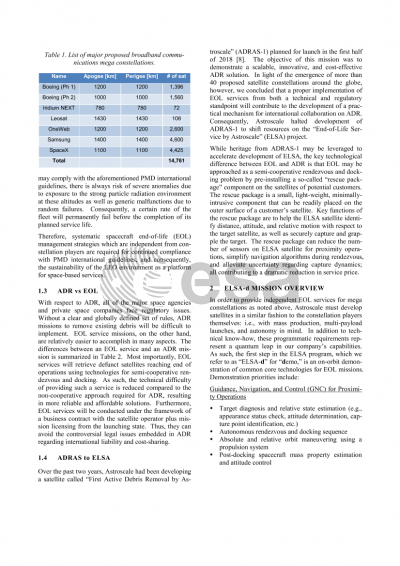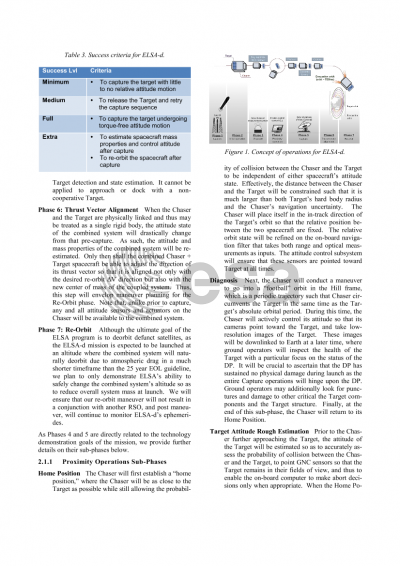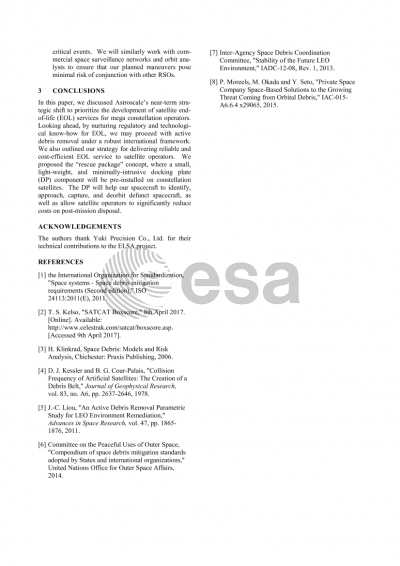Document details

Abstract
The number of operating satellites in Low Earth Orbit (LEO) is expected to grow exponentially in the coming years. As of July 2016, almost 800 satellites were operating in lower orbits. This figure could go beyond 10,000 in the coming years, based on the applications received by the International Telecommunication Union (ITU) to launch large constellations of satellites.
With satellites mass ranging from a few kilograms to several hundred of kilograms with shorter operational lifetime, the long-term stability of the 600-1400km-altitude band becomes at risk. With such a large number of satellites being launched to the already crowded low Earth orbit, strategies for handling the satellites once they reach the end of their operational lifetime become essential.
This paper will present End-of-Life management (EOL) services currently being developed by Astroscale to retrieve mega constellation satellites, maximizing Post Mission Disposal (PMD) in compliance with international guidelines. The solution will consist of a cost-effective chaser mounted with a versatile capture mechanism. The complete system demonstration mission is scheduled in 2019, during which the chaser (renamed to ELSA1 from ADRAS1) will perform key technologies including proximity operations to a second satellite and validate assumptions related to the company’s robust capturing mechanism.
Preview








